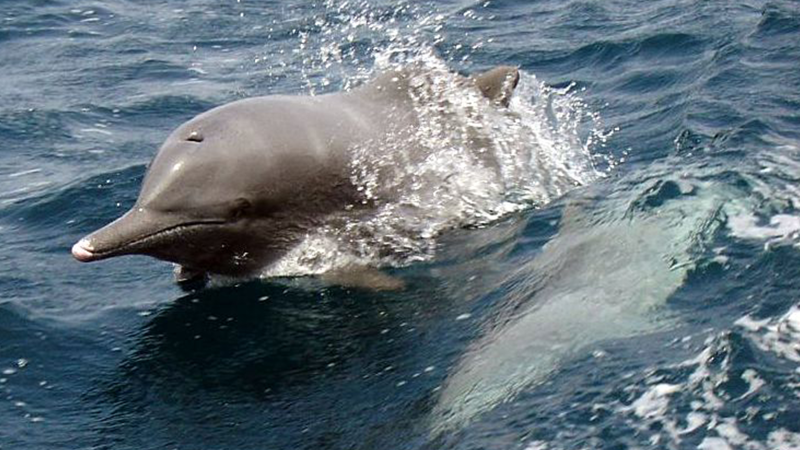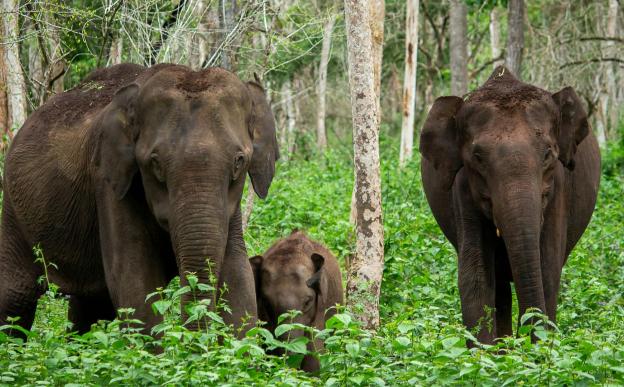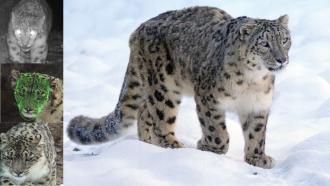
Picture credits: Wikipedia
Our oceans are home to hundreds of species, including marine mammals. Unlike fish, marine mammals do not have gills and reproduce by giving birth to calves instead of laying eggs. They are some of the most intelligent species found in the animal kingdom. The Indian coast is home to over 30 marine mammal species such as whales, dolphins, porpoises, and dugongs.
As the effects of climate change and human activity become more severe, more and more marine mammals are being washed up on coastlines. When an animal washes up either dead or alive, the event is called a “stranding”. These strandings can indicate the health of the oceanic water, changes in the species populations, the impact of natural and man-made factors, and the life history of a species. An area with significantly more strandings than other similar areas is called a hotspot.
Researchers from the Wildlife Institute of India (WII), Wildlife Conservation Society-India and the National Oceanic and Atmospheric Administration (USA) conducted a study to better understand stranding events on the Indian coast and identify places where these occur more frequently. The project was funded by National CAMPA Advisory Council (NCAC), Ministry of Environment, Forest and Climate Change, Government of India. The study aimed to determine if there was a stranding pattern in the seasons or time of year as well as specific locations. The research team compiled information on strandings over an impressive 270 years from publications, open access databases, and reports. Their research discovered trends for hotspots in particular coastal areas like the Northern Karnataka coast, south of Kerala, Tamil Nadu, and Visakhapatnam. They also found that stranding events have increased over recent years, particularly between 2015–2017. A sharp increase in the stranding reports was also aided by the faster spread of information through social media platforms.
Ms Sohini Dudhat from WII, a researcher involved in the study, said, “We felt that the available data of marine mammal strandings over the Indian coast is an untapped resource. Individual strandings reported might seem to be a random phenomenon, but if we look at a bigger picture over a larger timespan, distinct patterns may emerge, which might point in the right direction and help focus research efforts.” “The idea was to understand the patterns by compiling this scattered data into a streamlined dataset that can guide future research and policies”, adds Dr Anant Pande, from WCS-India and a member of the research team.
From the compiled dataset, the research team classified the 1674 records they found into five categories – sightings (660), induced deaths or hunting (59), accidental deaths (240), and live or dead strandings (632), and unknown (83). Sightings referred to live animals that were spotted off the coast. The induced deaths refer to animals that were captured intentionally or hunted. The accidental deaths were a result of animals being entangled in fishing nets. The dead or live strandings consist of animals found dead or alive on the shore or floating near it. An additional subcategory called “mass stranding” was used in case two or more mammals were found together. The unknown category consisted of records that did not contain sufficient information to put them into one of the other categories.
Regarding the hotspots for stranding, the authors found that the period from 2015 to 2017 had significantly more strandings (27.66 per year, 13% of all strandings) than in previous years. In light of a high number of strandings, particularly in 2017, ‘new hotspots’ were found in the southern region of Gujarat, near Veraval and the coast of Surat.
The coast around the Gulf of Kutch Marine National Park, Gujarat, and most of the Konkan coast, except Ratnagiri, Maharashtra, were considered ‘consecutive hotspots’ because of a high number of strandings over multiple recent years. The third category, called ‘sporadic hotspots’, consisted of areas around the northern Karnataka coast, south of Kerala and Tamil Nadu, Visakhapatnam and the Andaman and Nicobar Islands. Here the number of strandings was higher but not consistent over time. Lastly, no stranding pattern was seen in southern Karnataka, northern Kerala, Lakshadweep Islands, Pondicherry, Andhra Pradesh, Odisha, and West Bengal.
While these categories are helpful to understanding strandings on the Indian Coast, we need to note that there is a lack of continuity in the data set, which could affect the patterns identified. For example, awareness about marine mammal strandings and efforts to monitor the coast have increased in more recent years. Also, better internet connectivity allowed for efficient reporting.
In terms of variation during the year, the paper found that more baleen whale and dolphin strandings occurred during the monsoon season and a little after on the west coast, whereas the number of dolphin and dugong strandings increased post retreating monsoon on the east coast.
The discoveries made in this paper regarding key areas to pay attention to have big consequences for other researchers in the field. Ms Dudhat says, “Scientists can further focus their research efforts in the identified hotspot regions to look at the intensity of known threats to marine mammals such as fisheries, vessel traffic, and some topography features that might drive the observed patterns. This study is the baseline for exploring the possible causes of strandings and suggesting locations for agencies to facilitate better primary response to stranding events in the country.” A better response would allow for living animals to be rescued and carcasses to be appropriately analysed to understand threats to marine mammals.
The team plans to take their research findings forward to work in marine mammal conservation.
“Our future research plans are to aid marine mammal monitoring in select coastlines to reduce mortality and help the government prioritise protected areas for marine mammals”, concludes Dr Pande.
This article has been run past the researchers, whose work is covered, to ensure accuracy.






